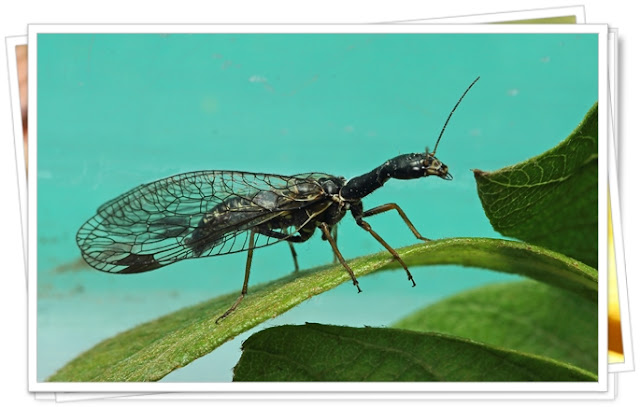Sometimes, just occassionally, the gods smile on me and I find something really exciting that I cannot wait to share by blogging about.
This is one of those times!
Raphidioptera!
Let me explain.
You may recall that a few days ago we had something of a downturn in the weather here in the UK. Suddenly, from temperatures in the 80s and beautifully balmy, summer days, with barely a breath of wind, we were treated to this...
(The following vid may not load in email version)
Yes, rain, hail, thunder and strong winds. Unbeknown to me though, this was instrumental in my being able to find the subject of my exciting news.
There's a wonderful internet site called 'Eakringbirds.com' that is full of useful information for anybody interested in insects; and they have this to say about Raphidiiae:
'Raphidiidae attain an almost mythical status among some naturalists. A great many have never seen them, even after some years spent in the field and in truth, they are not something you can set out to find easily, even when armed with some level of knowledge regarding their arboreal habitat requirements.'
OK JJ...you have whetted our appetites, now tell us: what are Raphidiidae?
Once mated, Snake Flies usually spend most of their lives high up in the tree canopy, but unusually windy (and presumably also wet) weather, will bring them down to lower levels.
I have this theory that the hours following bad weather can be good for bug hunting; and so that's why I was keen to visit my local woods once the rain stopped, and how I came to discover this amazing creature that I have only ever seen once before (a number of years ago now) and most likely will never encounter again. Unless I get back to California at some point in the future, post lockdown, where they seem to be plentiful.
My sleep hasn't been disturbed by anybody guessing what the mystery object was in my last update; and so I suppose I should tell you what I think it was, right?
Well I think it is a Psyllid moult, or exoskeleton:
Here are some nymphs that I found the same day...
I think this species is 'Cacopsylla peregrina'. The brown streaks down the wing-pads are probably diagnostic for this one, along with presence of Hawthorn.
The adults look something like this:
A couple more pictures to share and then I shall disappear back up the creek!
On an early morning walk after rain, I spotted this little Cricket nymph...
A couple more pictures to share and then I shall disappear back up the creek!
On an early morning walk after rain, I spotted this little Cricket nymph...
























































